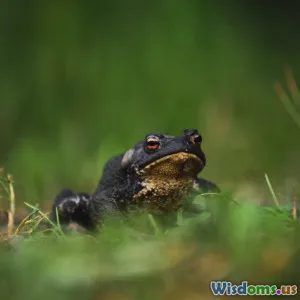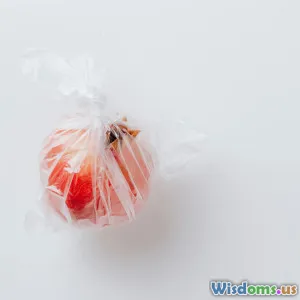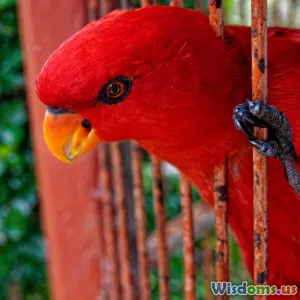
Ten Invasive Species Threatening Native Wildlife Today
7 min read Explore ten invasive species disrupting native wildlife globally and learn why protecting ecosystems matters now more than ever. (0 Reviews)
Ten Invasive Species Threatening Native Wildlife Today
Introduction
Imagine a foreign invader creeping silently into a carefully balanced community, disrupting lives, eating resources, and pushing native neighbors to extinction. This isn’t just fiction: invasive species worldwide are undermining the survival of native wildlife and destabilizing ecosystems. These non-native organisms, introduced intentionally or accidentally, often lack natural predators and proliferate unchecked, causing ecological chaos. Their covert advance presents some of the greatest environmental challenges today. Understanding which invasive species pose the biggest threats and why is essential—both to appreciate the biodiversity at risk and to galvanize action toward conservation. This article dives into ten particularly impactful invasive species wreaking havoc on native wildlife across continents.
1. Burmese Python (Python bivittatus)
Originating from Southeast Asia, the Burmese python has infamously invaded the Florida Everglades. Released into the wild mostly through the pet trade, these reptiles have established a formidable presence. Studies indicate a 90% decline in raccoon populations and dramatic falloffs in rabbits and opossums after their arrival. Their ambush predation and large size allow them to consume a range of mammals, birds, and even alligators, tipping the balance of this rich ecosystem.
2. European Starling (Sturnus vulgaris)
Introduced to North America in the late 19th century, the European starling has multiplied to over 200 million birds. Starling flocks aggressively outcompete native birds like woodpeckers and bluebirds for nesting cavities, degrading local bird populations. The economic cost linked to their widespread crop damage runs into millions annually, further underscoring their invasive impact.
3. Cane Toad (Rhinella marina)
Brought to Australia to combat cane beetles in sugarcane fields, the cane toad itself became a notorious invader. Its potent toxins, deadly to many native predators such as quolls and crocodiles, have caused declines in these species. Cane toads breed rapidly and adapt well to diverse habitats, making their control a formidable challenge.
4. Zebra Mussel (Dreissena polymorpha)
Native to lakes in southern Russia and Ukraine, zebra mussels now infest vast areas of North American waterways. They clog water intake pipes, damage infrastructure, and outcompete native mollusks for food and habitat. Their rapid filtering activity alters nutrient cycles, harming fish populations and water quality.
5. Asian Carp (Hypophthalmichthys spp.)
Asian carp species introduced to U.S. water systems have spread extensively, threatening the Great Lakes ecosystem. These fish consume plankton critical for native fish larvae development, leading to declines in native species. Despite aggressive management efforts, their presence endangers fisheries and aquatic biodiversity.
6. Kudzu (Pueraria montana)
Often called “the vine that ate the South,” kudzu was introduced to America from Asia as erosion control. However, it grows aggressively, smothering native plants by blocking sunlight and altering habitats essential for insects and wildlife. Controlling kudzu requires sustained effort due to its rapid growth and root system.
7. Emerald Ash Borer (Agrilus planipennis)
This beetle native to northeast Asia has decimated ash tree populations in North America since its detection in 2002. The emerald ash borer larvae feed beneath the bark, disrupting the tree’s nutrient flow and causing death within years. The loss of ash trees significantly alters forest composition and impacts species relying on them.
8. Brown Tree Snake (Boiga irregularis)
Accidentally introduced to Guam likely through cargo shipments after World War II, the brown tree snake caused catastrophic declines in native bird populations. With no natural predators on the island, it preys heavily on birds, bats, and lizards, leading to extinctions and destabilized food webs.
9. Fire Ant (Solenopsis invicta)
Introduced to the southern United States from South America in the 1930s, fire ants disrupt native insect communities, prey on small vertebrates, and affect ground-nesting birds. Their painful stings can harm livestock and humans, highlighting both ecological and economic concerns.
10. Green Crab (Carcinus maenas)
Originally from Europe, the green crab has spread to coasts worldwide. It competes with native shellfish for food and habitat, preys on commercially important bivalves, and alters marine ecosystems. Its invasion has led to ecosystem damage and costly declines in fisheries.
Conclusion
Invasive species are biological interlopers that disrupt native wildlife and ecosystems globally. From giant snakes in Florida to voracious aquatic invaders, these species showcase nature’s vulnerability when foreign organisms break ecological boundaries. The far-reaching impacts include biodiversity loss, altered food webs, and economic costs. Effective management requires awareness, early detection, public engagement, and research-backed control measures. Recognizing the individual stories of key invaders can galvanize global conservation efforts to protect native species and maintain ecological resilience. The fight to preserve the intricate balance of life hinges on understanding and combating invasive species—an imperative responsibility for current and future generations.
Rate the Post
User Reviews
Popular Posts



















